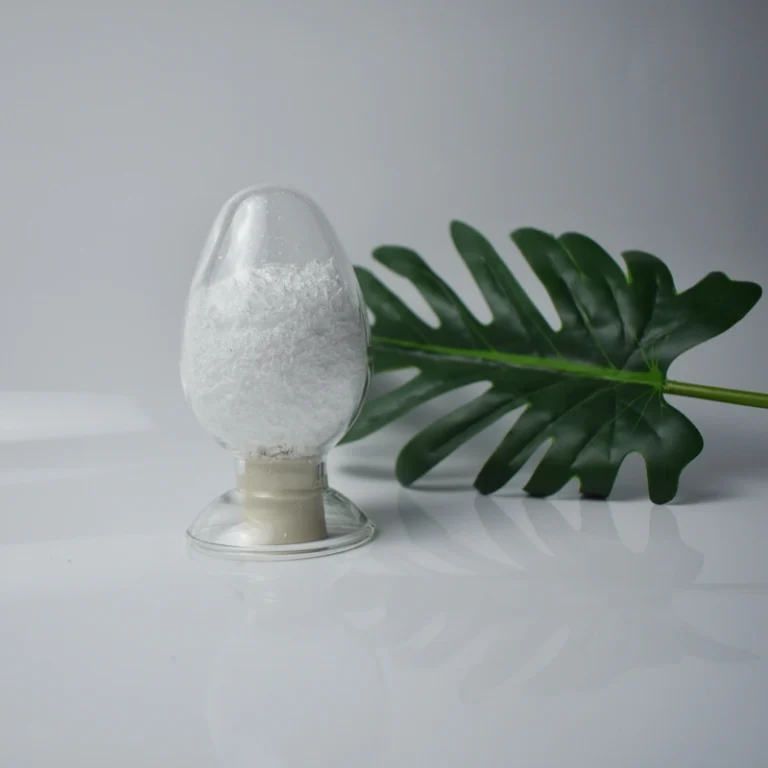Have you ever wondered how modern medicine can deliver life-saving treatments so precisely and effectively? A big part of the answer lies in innovative materials like PLGA 5050. This biodegradable polymer may not sound glamorous, but it’s quietly transforming how we treat diseases, repair tissues, and create safer medical devices.
Let’s break it down together. Whether you’re curious about how it works or why it’s such a big deal in healthcare, this blog will give you a clear, engaging look at everything you need to know about PLGA 5050.
What Exactly Is PLGA 5050?
PLGA stands for poly(lactic-co-glycolic acid), a fancy name for a synthetic polymer made from lactic acid and glycolic acid. These two building blocks are combined in equal amounts in the 50:50 ratio, giving the polymer its specific name. Why does that ratio matter? Because it affects how the material breaks down and performs in the body.
Here’s the cool part: when PLGA 5050 is used in medical applications, it degrades naturally into harmless byproducts (lactic acid and glycolic acid), which the body processes and eliminates. That means no residue, no need for removal surgeries, and no harm to the body.
Why Is the 50:50 Ratio So Important?
Think of PLGA as a material that works on a timer. Its degradation rate depends on the ratio of its two main components. With a 50:50 split, PLGA 5050 absorbs water quickly and breaks down faster than other ratios, such as 75:25 or 85:15.
This faster degradation makes it ideal for certain medical uses. For example, in drug delivery, PLGA 5050 can release medication over weeks or months, ensuring a steady and reliable dose. If the polymer degraded too slowly, the treatment wouldn’t be as effective, and if it broke down too fast, the body might not get the full benefit of the drug.
How Is PLGA 5050 Used in Medicine?
PLGA 5050 has earned its spot as a go-to material for countless medical and pharmaceutical applications. Let’s explore where it’s making the biggest impact:
1. Drug Delivery Systems
Imagine a cancer patient who needs chemotherapy delivered steadily over a few months. Instead of regular hospital visits or painful injections, PLGA 5050 makes it possible to deliver the drug gradually and consistently, right where it’s needed.
This polymer is a key component in creating microspheres, implants, or nanoparticles that release medications slowly. It’s used for everything from antibiotics to hormones, making treatments more effective and patient-friendly.
2. Biodegradable Implants
Ever heard of a medical implant that dissolves on its own? That’s what PLGA 5050 enables. For instance, in orthopedic surgeries, screws and pins made from this polymer can hold bones together while they heal. Once the job is done, the implant degrades naturally, so there’s no need for a follow-up surgery to remove it.
3. Tissue Engineering
Tissue engineering might sound futuristic, but it’s happening right now—and PLGA 5050 plays a huge role. It’s often used as a scaffold, a temporary structure that supports cell growth until new tissue forms. Whether it’s repairing cartilage or regenerating skin, this polymer helps the body rebuild itself.
4. Vaccine Delivery
Vaccines are another area where PLGA 5050 makes a difference. It’s used to create particles that deliver antigens over time, helping the body develop a stronger and longer-lasting immune response. This approach reduces the need for multiple booster shots.
5. Wound Care
PLGA 5050 is also making strides in wound healing. It’s used in biodegradable sutures and dressings that not only close wounds but also release helpful agents, like antibiotics, to speed up recovery.
What Makes PLGA 5050 So Popular?
You might be wondering, why is PLGA 5050 the material of choice for so many medical applications? Here’s why:
- Biocompatibility – It’s safe for the body and breaks down into natural, non-toxic components.
- Customizable Timing – The 50:50 ratio ensures predictable degradation, which can be tailored to specific medical needs.
- Controlled Release – Perfect for drug delivery systems, it releases medications in a steady, reliable way.
- Versatility – From scaffolds to sutures, PLGA 5050 adapts to a wide range of uses.
- Eliminates Second Surgeries – Since it dissolves on its own, there’s no need for additional procedures to remove implants.
What’s Next for PLGA 5050?
While PLGA 5050 is already a staple in modern medicine, researchers are constantly finding new ways to improve it. One challenge is ensuring it performs consistently in different parts of the body, where factors like pH and temperature can vary. Scientists are also exploring ways to enhance its properties, such as adding coatings or mixing it with other materials to fine-tune its performance.
The future looks bright. From more effective cancer treatments to advanced tissue engineering and bioengineered organs, the possibilities are endless.
A Material That’s Quietly Revolutionizing Medicine
PLGA 5050 is at the heart of many medical breakthroughs. Its ability to degrade safely, deliver drugs precisely, and support healing makes it one of the most valuable tools in healthcare today.
Think about it: a single material that can release medication over months, dissolve implants without a trace, and help the body grow new tissues. That’s the power of PLGA 5050. It’s not just a polymer—it’s a crucial piece of the puzzle in improving patient outcomes and advancing medical science.
Next time you hear about innovative treatments, there’s a good chance PLGA 5050 is part of the story, working silently but effectively to improve lives. That’s something worth appreciating, don’t you think?
